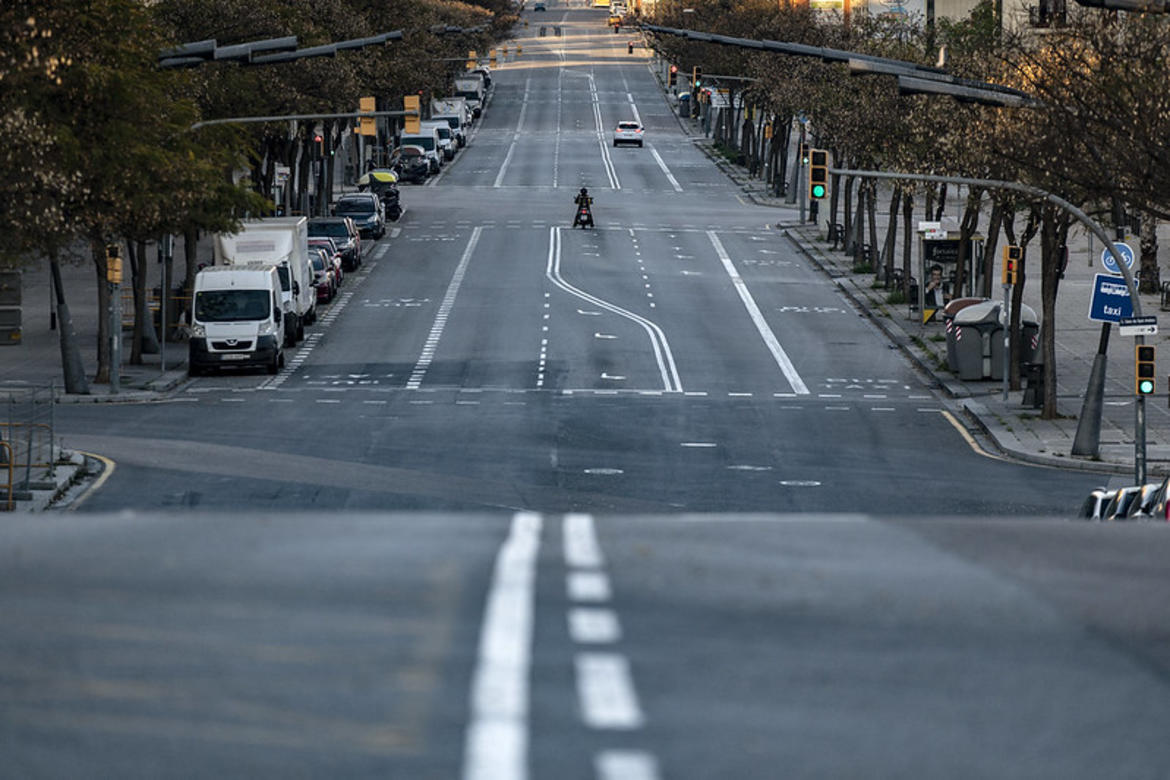
European mobility in times of coronavirus
You can explore the pedestrian occupation, road traffic and flights of European capitals in this data visualization, which shows the current percentage of occupation compared to the normal levels before the coronavirus lockdown.
Click on a city to see further detail and/or drag the timeline bar at the bottom to observe the temporal evolution.
Methodology
This application, created by Civio for EDJNet, monitors three parameters daily versus to the usual pre-crises: pedestrian traffic, road traffic and flights. The information focuses only on European capitals. We use three sources:
- Airports. We use daily traffic data provided by EuroControl, broken down by airport. EuroControl provides the number of flights at the airport, as well as the number of flights a year earlier, on a comparable day (i.e. Monday 2020-02-03 compares to Monday 2019-02-04). These two numbers allow us to calculate a daily percentage of fall with respect to the pre-crisis level.
- Pedestrians traffic data is drawn from Apple’s mobility reports , which reflect the use of address searches on Apple Maps. The reports consist of a percentage of daily variation from the usual baseline established by Apple, so we do not perform any additional processing. We use the data at the city level for the most important European capitals or, if they are not available, the data at the national level, indicating it in the graph.
- Road traffic data comes from the TomTom Traffic Index , which compares the time it takes for drivers to reach their destination on a given day against a congestion-free scenario taken as the baseline. Daily, we download the real-time data provided by TomTom with hourly granularity on the current day’s congestion and the average congestion in 2019. (As an example, this is the Brussels page.) The daily indicator shown on the map is the decrease in the sum of the hourly values of the current congestion, versus the sum of hourly values of the 2019 average congestion.
The download and data processing has been done in Ruby. The visualization has been developed with Adobe Illustrator and D3.js. Both the European map and city graphics are embeddable.
The information is updated daily while we continue studying Europe’s return to normality.
https://civio.es/en/covid-european-mobility/
